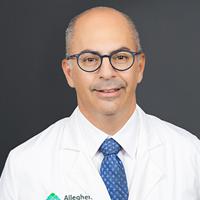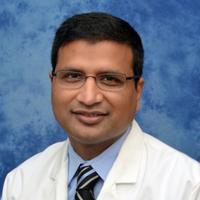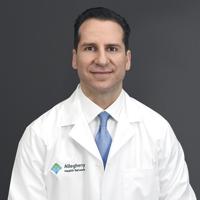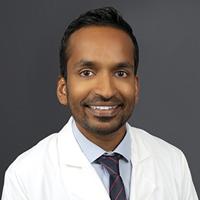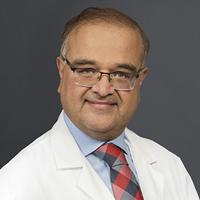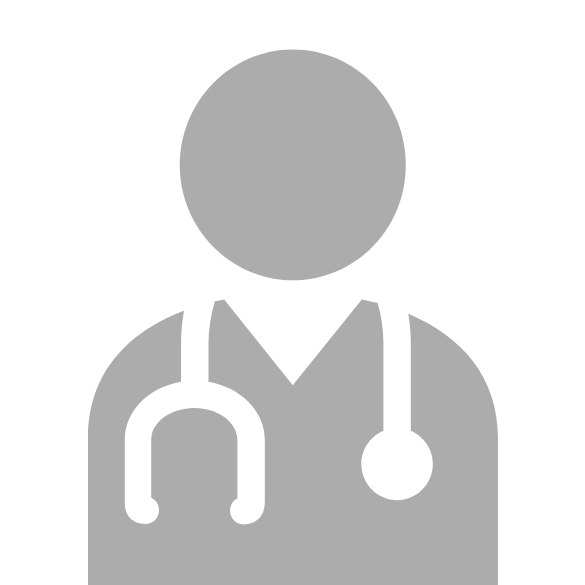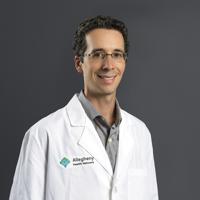Learn more about our appointment options, second opinions, locations, referrals, and resources.
AHN Structural Heart Center
About structural heart medicine
The AHN Structural Heart Center provides dedicated care for patients with advanced and complex valvular and structural heart disease. From evaluation and treatment to care before and after surgery, this unique program helps improve heart function.
Our team of highly skilled specialists, led by cardiothoracic surgeons and interventional cardiologists, focuses on problems affecting heart structures. The AHN Structural Heart Center includes three primary programs that focus on particular aspects of structural heart medicine, including:
- The Aortic Valve Program. This program provides care for patients with aortic valve conditions, such as aortic valve regurgitation or aortic valve stenosis. Learn more about Aortic Valve Program.
- The Mitral Valve Program. This program replaces or repairs damaged mitral valves with minimally invasive procedures. Learn more about Mitral Valve Program.
- The left atrial appendage closure (LAAO) or WATCHMAN™ Program. This program evaluates patients who are unable to take blood-thinning medication due to other medical issues. The procedure closes the left atrial appendage, which is thought to be the source of blood clot formation in patients with atrial fibrillation.
AHN’s unique programs offer a range of treatment options for people experiencing heart problems or conditions. The multidisciplinary team includes specialists from the following divisions:
- Cardiac Surgery
- Interventional Cardiology
- Cardiovascular Imaging
- General Cardiology
- Heart Failure and Transplant
- Electrophysiology
- Geriatricians
WATCHMAN™ is a trademark of Boston Scientific and used with permission.
How we treat structural heart conditions
We use the latest innovations for diagnosing, treating, and preventing various heart conditions. Our AHN specialists are experts at repairing heart problems with the most minimally invasive approach.
Conditions we treat
- Valvular heart disease. There are four heart valves that regulate the forward flow of blood between the four chambers of the heart. Heart valves can be damaged due to illness, genetics, other heart conditions, or simply wear out over time. Valvular dysfunction is typically classified as regurgitation/insufficiency (leaky), or stenosis (stiff and not opening properly). Patients may experience heart failure symptoms if these conditions become severe.
- Mitral valve disease occurs when the valve that connects the two chambers on the left side of the heart fails to open or close properly. Learn more about mitral valve disease.
- Tricuspid valve disease happens when the tricuspid valve improperly regulates the blood flow between the two chambers on the right side of the heart. If the valve becomes too “leaky,” it can create a buildup of pressure.
- Aortic valve disease occurs when the heart valve, or the “door” that allows the blood to flow out of the heart and into the aorta, doesn’t open or close properly. Learn more about aortic valve disease.
- Atrial fibrillation with an inability to take blood thinners. The risk of stroke in patients with atrial fibrillation can be as high as 20%. Starting therapy early, which often includes blood thinners, is important to help minimize this risk. However, having a bleeding disorder, having a high-risk lifestyle, or being at high risk of falling are common reasons why patients don’t tolerate blood thinner therapy. Learn more about atrial fibrillation.
Structural heart and valve center treatment options
The AHN Structural Heart Center provides patients with a variety of advanced treatment options, including:
- Transcatheter aortic valve replacement (TAVR). A minimally invasive, catheter-based procedure for aortic valve replacement. Learn more about Transcatheter aortic valve replacement (TAVR).
- Transcatheter mitral valve replacement (TMVR). A minimally invasive, catheter-based procedure for mitral valve replacement in a previously replaced bioprosthetic (tissue) mitral valve. TMVR for patients with mitral valve disease of their native valve (the one they were born with) is available as part of a clinical trial. Participation in clinical trials is based on meeting eligibility criteria.
- Transcatheter edge-to-edge repair (TEER). A minimally invasive, catheter-based procedure used to treat a “leaky” heart valve.
- MitraClip™ procedure. A MitraClip™ is used to treat severe symptomatic mitral valve regurgitation. The device clips the leaflets of the valve together to reduce the amount of blood that can flow backwards into the top chamber on the left side of the heart.
- TriClip™ procedure. This is an investigational procedure used to treat severe symptomatic tricuspid valve regurgitation. The device clips the leaflets of the valve together to reduce the amount of blood that can flow backwards into the top chamber on the right side of the heart.
- Left atrial appendage occlusion (LAAO). The WATCHMAN™ and Amulet™ devices lower stroke risk in people with heart arrhythmias who can’t use blood thinners.
WATCHMAN™ is a trademark of Boston Scientific and used with permission.
MitraClip™ is a trademark of Abbott and is used with permission
TriClip™ is a trademark of Abbott and is used with permission.
Amulet™ is a trademark of Abbott and is used with permission.
Why choose us?
Our structural heart specialists are part of a multidisciplinary team that works together to develop an individualized care plan.
Efficiency
We provide patients with the most advanced imaging available, as well as fast testing and appointments. We take pride in ensuring that the time from consultation to treatment is as short as possible.
Coordination
Our team will review your records prior to your appointment. If additional testing is needed, it’s often scheduled for the same day in order to decrease your number of visits to the hospital. You’ll meet with several specialists to help determine the best treatment plan.
Customized treatment plans
A multidisciplinary team of doctors and nurses will review your case on an individual basis. They’ll develop and recommend the best treatment plan but, ultimately, the decision is still yours.
We offer information on lifestyle changes, new therapies, and medications. We monitor patients very closely before and after diagnosis or a critical event.
Expertise
Our team of specialists includes cardiac surgeons, interventional cardiologists, electrophysiologists, echo cardiologists, and radiologists. AHN experts use advanced technologies to identify and diagnose conditions, as well as offer the latest treatment methods. Participation in cutting-edge clinical trials has led to great advances in the field of minimally invasive cardiac procedures — which involve smaller incisions, shorter recovery times, and often same-day discharge from the hospital.
Program leaders
At the AHN Structural Heart Center, you'll work with specialists dedicated to diagnosing and treating heart disease:
Cardiac surgeons
Interventional cardiologists
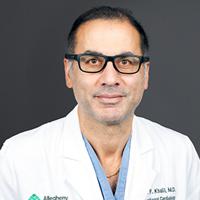
Co-Director, TAVR Program at Allegheny General
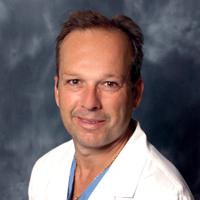
Medical Director for TAVR, TEER, and LAAO Programs at Allegheny General
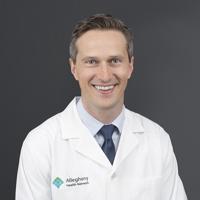
Medical Director, TAVR Program at Jefferson
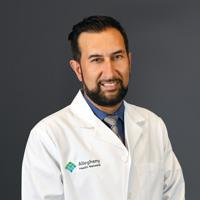
Medical Director, TAVR Program at Forbes
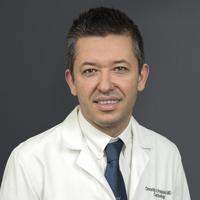
Medical Director, TAVR Program at Saint Vincent
Electrophysiologists
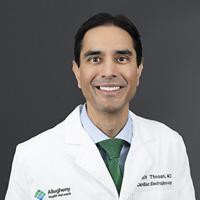
Co-Director for LAAO Program at Allegheny General
Clinical coordinators
Diane Berger, RN
Anne Cooper, RN
Jaime Delmaster, RN
Patricia Dragone, RN
Sally Ermi, RN
Jessica Hydock, MSN, CRNP
Eileen Martini, RN
Catie Pullia, RN
Traci Schick, CCMA
Tina Strange, NCMA
Laurie Weatherby, RN
Structural heart and valve center appointments and information
Not yet diagnosed
If you don’t have a diagnosis, call (412) DOCTORS (412) 362-8677 to make an appointment with your primary care physician. They will explore causes of your symptoms.
To schedule an evaluation
If you’ve recently been diagnosed, want a second opinion, or are looking for an evaluation, contact one of the structural heart clinics directly to schedule an appointment. An evaluation is needed if you’ve been diagnosed or want a second opinion.
We accept films from facilities outside of our network, such as a CT scan and cardiac catheterization, but an echocardiogram must be done by AHN.
Heart valve clinics by location
Pittsburgh
Allegheny General Hospital
320 East North Avenue
Pittsburgh, PA 15212
GET DIRECTIONS
Forbes Hospital
2570 Haymaker Road
Monroeville, PA 15146
GET DIRECTIONS
Jefferson Hospital
565 Coal Valley Road
Jefferson Hills, PA 15025
GET DIRECTIONS
Erie
Heart valve research
AHN Cardiovascular Research Institute
AHN’s Cardiovascular Research Institute is established on more than 100 years of innovation, spanning diverse areas of focus, including research for the latest in heart disease treatments. Our qualified team takes pride in using new devices and medications, as well as state-of-the-art devices, technology, and therapies to help revolutionize care for heart disease patients.
What is a clinical trial?
Clinical trials are special research opportunities that explore medical treatments, strategies, or devices to ensure they’re safe and effective for humans.
Active clinical trials
By prioritizing research and innovation, our physicians and patients are engaged in more than 100 national and international clinical trials. Participating in these trials gives AHN patients special access to some of the latest options for heart disease.
If you’d like to learn more about eligibility requirements for a clinical trial or want to learn more about research opportunities, check out our active clinical trials.
Structural heart and valve center referral information for health care professionals
Refer your patient to an AHN cardiovascular specialist
Non-AHN providers can submit a referral online or by calling (844) MD-REFER (844) 637-3337.
Non-AHN providers can use the EpicCare® Link™ platform to view updates on their patients’ care within AHN after the initial referral is completed.
Medical records
If you need access to specific test results or imaging not provided in the EpicCare Link platform, please fill out a medical record request form.
EpicCare® is a registered trademark of Epic Systems Corporation and used with permission.
EpicCare® Link™ is a trademark of Epic Systems Corporation and used with permission.


